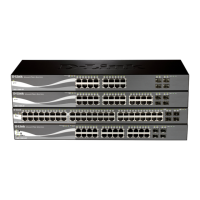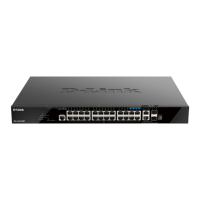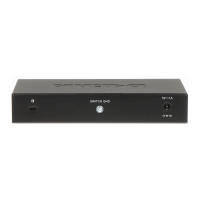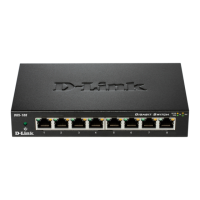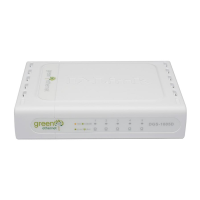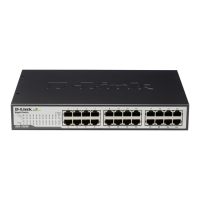DGS-1510 Series Gigabit Ethernet SmartPro Switch Web UI Reference Guide
338
packets are destined to any router or system network management interface by means of interactive
access protocols, like Telnet and SSH. In the Route group, packets are identified as traversing routing
packets that is generally processed by the router CPU.
In the following table a list of supported protocols are displayed with their respective sub-interfaces
(groups):
Protocol Name Sub-interface (Group) Description
802.1X
Protocol Port-based Network Access Control
ARP
Protocol Address resolution Protocol (ARP)
DHCP
Protocol Dynamic Host Configuration Protocol
DNS
Protocol Domain Name System
GVRP
Protocol GARP VLAN Registration Protocol
ICMPv4
Protocol Internet Control Message Protocol
ICMPv6-Neighbor
Protocol IPv6 Internet Control Message Protocol Neighbor
Discovery Protocol (NS/NA/RS/RA)
ICMPv6-Other
Protocol IPv6 Internet Control Message Protocol except
Neighbor Discovery Protocol (NS/NA/RS/RA)
IGMP
Protocol Internet Group Management Protocol
LACP
Protocol Link Aggregation Control Protocol
SNMP
Manage Simple Network Management Protocol
SSH
Manage Secure Shell
STP
Protocol Spanning Tree Protocol
Telnet
Manage Telnet
TFTP
Manage Trivial File Transfer Protocol
Web
Manage Hypertext Transfer Protocol (HTTP) and Hypertext
Transfer Protocol Secure (HTTPS)
A customized rate limit (in packets per second) can be assigned to the Safeguard Engine’s sub-interfaces
as a whole or to individual protocols specified by the user in the management interface. Be careful when
customizing the rate limit for individual protocols, using this function, as improper rate limits can cause the
Switch to process packets abnormally.
NOTE: When Safeguard Engine is enabled, the Switch will allot bandwidth to various traffic
flows (ARP, IP) using the FFP (Fast Filter Processor) metering table to control the CPU
utilization and limit traffic. This may limit the speed of routing traffic over the network.
Safeguard Engine Settings
This window is used to view and configure the safeguard engine settings.
To view the following window, click Security > Safeguard Engine > Safeguard Engine Settings, as
shown below:

